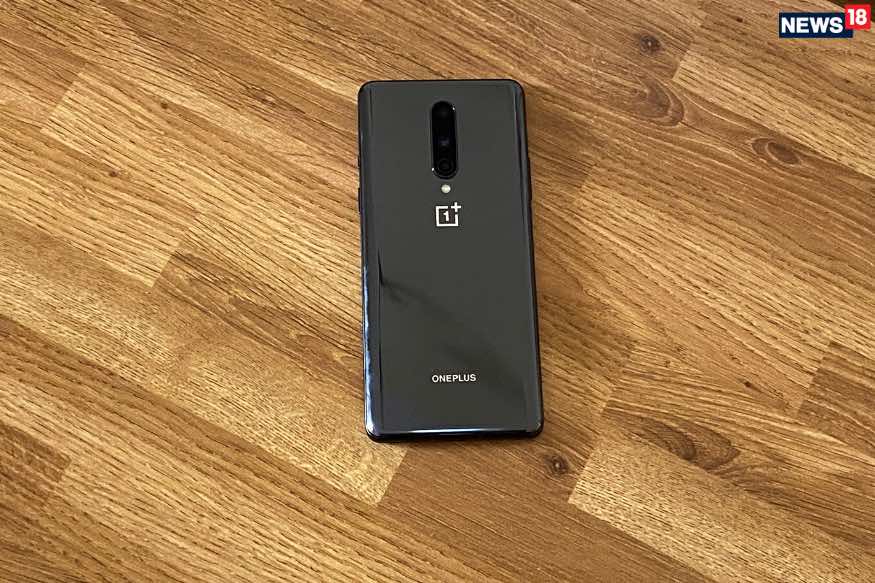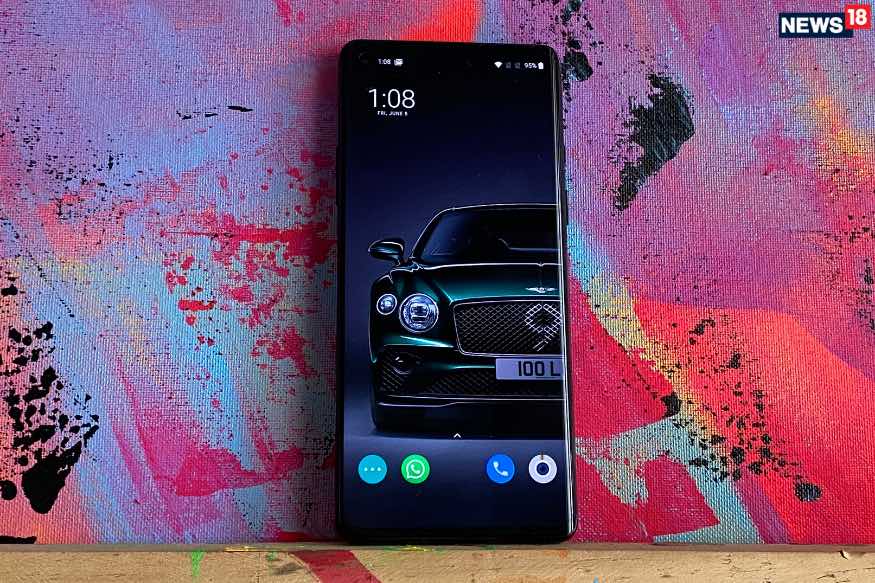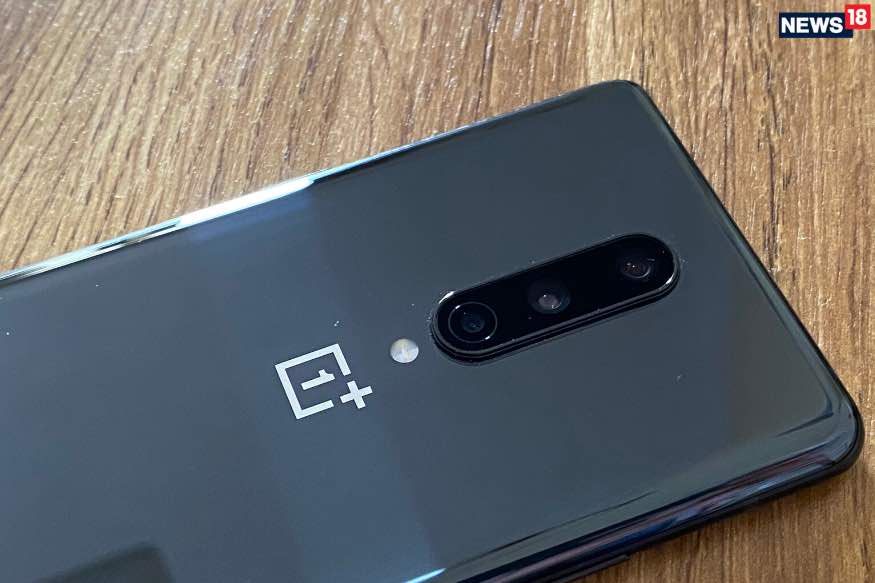OnePlus has painstakingly, over the years, got the sort of faithful following that isn’t usually commonplace in the world of Android phones. These aren’t the noisy and reckless so-called community who spend more time on Twitter than sorting what is otherwise important in life. These are the discerning buyers, who have already bought a OnePlus phone many years ago, liked what they saw, and have appreciated the consistency over time. Their word also matters, when they recommend a phone to their friends or family. This is the loyal following that brands otherwise crave for, and for one, OnePlus has got that through sheer effort in the product. Hardware and software just come together better than almost every other Android phone, for the price OnePlus will sell you the phone for. That brings us to the latest in the line, the OnePlus 8, which follows up from the already very good OnePlus 7T.
You can get the OnePlus 8 in two variants. The entry-spec variant with 8GB RAM and 128GB storage costs Rs 44,999 and you can have this in Glacial Green and Onyx Black colours. The higher spec option with 12GB RAM and 256GB storage carries a price tag of Rs 49,999 and is available in three colour options—Glacial Green, Onyx Black and the gorgeous Interstellar Glow. Yes, it is more expensive than before—in comparison, the OnePlus 7T were priced at Rs 37,999 and Rs 39,999 when they were launched. But what you get with the OnePlus 8, all things considered, is more phone than before. One example, you immediately have the option to spec up to 12GB RAM, an option that wasn’t available last year. That is just the start for the upgrades that were necessary, and the consistency that is the hallmark of OnePlus phones.

A beautiful blend
There is a lot of familiarity about the design. And that is a great thing. It looks like a OnePlus phone from a mile away. Pick it up and it feels like a OnePlus phone. Rest assured, it is a OnePlus phone as you’d expect it. This still feels like a very good mix of glass and metal as it rests in your palm. There is Gorilla Glass at the front and the back to make it less susceptible to scratches—though I’m not sure which Gorilla Glass version this is. The biggest change however, and this is something that users had been demanding for a while now, is the dust and water resistance. The OnePlus 8 is better sealed off to dust and can handle splashes of water better than its predecessor—even though it doesn’t officially have a IP rating. In fact, compared with the OnePlus 7T, the OnePlus 8 is slightly less tall, slightly less wide and slightly thinner as well. it weighs lesser too, by 10 grams, at 180 grams. That, in the world of smartphones, is worth its weight in gold. Wait, that reminds me, what happened to that fascination with golden colored phones? Weren’t they a rage at one point? Nevertheless, I digress. As I often do.
What you don’t get with the OnePlus 8 is wireless charging. That is reserved for the larger OnePlus 8 Pro. To be honest, I do not feel that the lack of wireless charging in the OnePlus 8 is even worth a second thought. It should not have a bearing on your decision, and it is most certainly not a deal breaker. Yes, it would have been good to have had that flexibility, particularly since the OnePlus 8 costs a bit more than the OnePlus 7T. The world doesn’t end just because it isn’t there.
One thing, that cleanliness freaks (guilty as charged) would probably worry about a bit is the fact that the black colour variant has a glossy finish on the back. That makes it an instant fingerprint magnet.
The one unique element in OnePlus phones has always been the alert slider, a physical key that sits on the right-side spine and lets you toggle between the Ring, Silent and Vibrate profile modes. It is infinitely more convenient than having to unlock the phone, swipe down to access the quick options from the status bar and then tap on an icon to switch between profiles.
A fine and large enough canvas
Set this up, start using it, and it is hard to find fault with just about anything. The 6.55-inch display size is the same as the predecessor, which makes this is a genuinely big phone, even though it is smaller than the larger OnePlus 8 Pro. Both are AMOLED, both offer the 2,400 x 1080 resolution, both support HDR10 and both have the 90Hz refresh rate option. That being said, there are under-the-hood improvements which make a world of difference. The auto brightness feature now relies on the changes of 4096 levels, which makes auto brightness changes smoother, slicker and less noticeable in terms of any jarring changes. This is a very bright screen to, going up to 1100 nits of brightness.
The teardrop notch of the OnePlus 7T has been replaced with a punch hole adaptation of the front camera, which sits towards the top left of the display as you look at the OnePlus 8. I’ve never been distracted by any sort of notch anyway, bit for most users, this does stay out of the way because it is on one side.

The real fun happens when the display refresh rate is set at 90Hz. Everything is just extremely smooth. Be it the interface, the animations, the transitions, the content in apps, everything just glides ever so smoother across the screen. Switch back to 60Hz and you’ll just start to better appreciate what 90Hz actually brings to the table. Overall, this is a very good display. It is vibrant, it is sharp, viewing angles are in a way better than the predecessor and it is pleasant to be looking at it, be it for work or entertainment.
A lot of the credit should also be given to the OxygenOS wrapper around Android 10. In a way, I tend to appreciate it even more every time I return to a OnePlus phone after using other Android phones. It is just very well laid out, looks good on the eye and there is no bloat in terms of apps or features. There are a lot of option available for customization and system, but you’ll never feel overwhelmed by it all. The OxygenOS is all about minimalism.
This is more powerful than you can imagine
The upgrade that the OnePlus 8 Pro had bring is the Qualcomm Snapdragon 865 processor, Qualcomm’s X55 5G modem and the option of 12GB RAM. In a way, the performance is up to 25% faster than the OnePlus 7T Pro’s Qualcomm Snapdragon 855+ chip. What also really makes a world of difference is the much faster UFS 3.0 storage, which offers up to 125% faster read and write speeds. Everything is silky smooth in terms of the performance. Apps open in a snap, multitasking is a breeze and though I’m not much of a gamer, the few racing games that I play look gorgeous on this. The thing is, even the 8GB RAM version of the OnePlus 8 is most likely more powerful than your PC or laptop. If you get the 12GB RAM version, even better.
The OnePlus 8 has a 4300mAh battery, which has great stamina levels. This not only a day and a half at moderate usage, you’ll also not have any battery anxiety as you head towards the evening on a busy workday, when the world becomes a better place and you step out of home. OnePlus phones have always bundled great fast charging tech and the OnePlus 8 gets from a fully discharged state to 50% charge in 22 minutes. That is with the Warp Charge 30T charger bundled with the phone.
There are those little things that OnePlus has done which matter a lot. For instance, the haptic vibration feedback which now feels even better with every tap on the screen. The slightly curved sides on the back panel make it great to hold in your hand.

Good photographer, not-so-good photographer
Camera is something that still is a case of two halves. What you have at the back are a 48-megapixel Sony IMX586 primary camera, a 16-megapixel ultrawide camera and a 2-megapixel macro lens. By default, the OnePlus camera shoots at 12-megapixel resolution, which should be good enough for most users and their social media posts. If you want a bit more detailing, the 48-megapixel mode will be a better bet. That being said, this camera irrespective of the shooting resolution, pulls out some very neat photos in good light, indoors and outdoors. There is very good detailing, no soft edges to run the frame, colours are vivid and well distinguished and the dynamic range looks great too. It renders even the finest of details very well, something you’ll notice when you zoom in on shots. But switch to inconsistent or low light scenarios, and the OnePlus 8 struggles. Even with the night mode on, dynamic range, detailing and colours are nowhere close to what you would expect. Images also look a bit softer than I would have liked, perhaps because there is aggressive noise reduction at play.
Surprisingly, the OnePlus 8 misses out on a zoom camera. When you use the 2X button in the camera app, it actually crops an image from the main sensor. The OnePlus 7T had a 12-megapixel zoom camera with 2X optical zoom—and I am not exactly sure about the choices made here.
The Last Word: We haven’t even spoken about 5G yet
Last year, we were all a bit perplexed at how similar the OnePlus 7T and the OnePlus 7T Pro were. This year, OnePlus is trying to make the tiers clear. The OnePlus 8 Pro gets an IP68 dust and water resistance rating, a more powerful camera system, wireless charging and a 120Hz display refresh rate instead of 90Hz. That does not however take away from the OnePlus 8’s brilliance as a very competent Android smartphone.
In terms of the screen size, the OnePlus 8 sits between the 6.7-inch Samsung Galaxy S20+ and the 6.2-inch Samsung Galaxy S20, and is significantly less expensive than the two—the Galaxy S20 prices start around Rs 70,499 while the Galaxy S20+ will cost you upwards of around Rs 77,999. If you aren’t adamant about brand or certain features, the OnePlus 8 should very much be under consideration.
What you are getting with the OnePlus 8 is a rock-solid Android phone that doesn’t slow-burn a hole in your bank account. It is still as consistent in terms of performance to go with a very likeable personality and there is that simplicity with OxygenOS which remains priceless. The low light photography niggles aside, the OnePlus 8 is just all about ticking the right boxes. Particularly on the price tag. Including 5G, which may become relevant for us lot in India, at some point.
The OnePlus 8 is meant for anyone who may be using a OnePlus 6 or older phone, or anyone who wants a true flagship level Android phone experience, likes the bells and whistles in moderation and doesn’t really want the new phone to be as complex as the International Space Station. That’s perhaps the best I could have explained who the OnePlus 8 is for. Which is pretty much anyone who is looking to buy a new Android phone, but under the Rs 50,000 price point.
https://pubstack.nw18.com/pubsync/fallback/api/videos/recommended?source=n18english&channels=5d95e6c378c2f2492e2148a2&categories=5d95e6d7340a9e4981b2e0fe&query=OnePlus,8,Review:,This,Intelligent,Android,Phone,Will,Save,You,a,Lot,of,Money,android,OnePlus,7T,&publish_min=2020-06-03T20:44:07.000Z&publish_max=2020-06-05T20:44:07.000Z&sort_by=date-relevance&order_by=0&limit=2





0 Comments:
Post a Comment